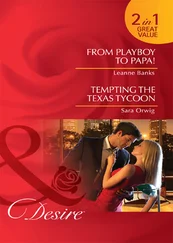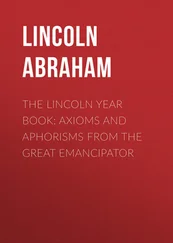Youri Kraskov - The Wonders of Arithmetic from Pierre Simon de Fermat
Здесь есть возможность читать онлайн «Youri Kraskov - The Wonders of Arithmetic from Pierre Simon de Fermat» — ознакомительный отрывок электронной книги совершенно бесплатно, а после прочтения отрывка купить полную версию. В некоторых случаях можно слушать аудио, скачать через торрент в формате fb2 и присутствует краткое содержание. Год выпуска: 2021, ISBN: 2021, Жанр: Прочая научная литература, Прочая научная литература, на русском языке. Описание произведения, (предисловие) а так же отзывы посетителей доступны на портале библиотеки ЛибКат.
- Название:The Wonders of Arithmetic from Pierre Simon de Fermat
- Автор:
- Жанр:
- Год:2021
- ISBN:978-5-532-98629-9
- Рейтинг книги:4 / 5. Голосов: 1
-
Избранное:Добавить в избранное
- Отзывы:
-
Ваша оценка:
- 80
- 1
- 2
- 3
- 4
- 5
The Wonders of Arithmetic from Pierre Simon de Fermat: краткое содержание, описание и аннотация
Предлагаем к чтению аннотацию, описание, краткое содержание или предисловие (зависит от того, что написал сам автор книги «The Wonders of Arithmetic from Pierre Simon de Fermat»). Если вы не нашли необходимую информацию о книге — напишите в комментариях, мы постараемся отыскать её.
The Wonders of Arithmetic from Pierre Simon de Fermat — читать онлайн ознакомительный отрывок
Ниже представлен текст книги, разбитый по страницам. Система сохранения места последней прочитанной страницы, позволяет с удобством читать онлайн бесплатно книгу «The Wonders of Arithmetic from Pierre Simon de Fermat», без необходимости каждый раз заново искать на чём Вы остановились. Поставьте закладку, и сможете в любой момент перейти на страницу, на которой закончили чтение.
Интервал:
Закладка:
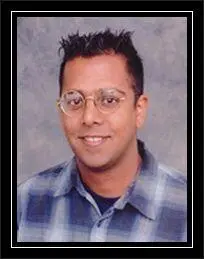
Pic. 14. “The New York Times” of 06/24/1993 with an Article About Solving the FLT Problem
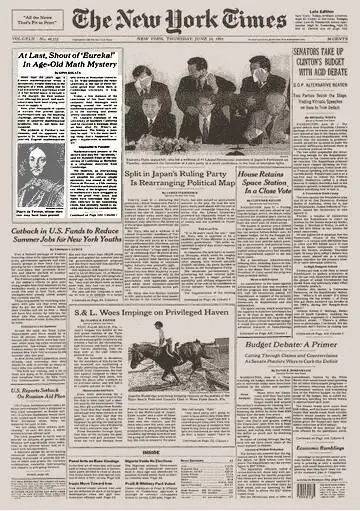
If Singh independently was preparing this book, then he would have so many questions that he would not have them managed for 20 years. Of course, he was helped in every way by the very heroes-professors having glorified in the BBC film, therefore the book became a success and it is really interesting to read it even to those who know about mathematics only by hearsay. The first thing that immediately catches your eye, is the fact that in the book it was made an arithmetic error (!) and not somewhere, but in its very name! Indeed, it is well known that “the greatest minds” could not know anything about the FLT before 1670 when its wording first appeared in a book published by Fermat’s son Clément Samuel “Arithmetic” by Diophantus with comments by K. Bachet and P. Fermat (see Appendix VI Pic. 96). 8 8 If this book was published during the life of Fermat, then he would simply be torn to pieces because in his 48 remarks he did not give a proof of any one of his theorems. But in 1670 i.e. 5 years after his death, there was no one to punish with and venerable mathematicians themselves had to look for solutions to the problems proposed by him. But with this they obviously had not managed and of course, many of them could not forgive Fermat of such insolence. They were also not forgotten that during his lifetime he twice arranged the challenges to English mathematicians, which they evidently could not cope with, despite his generous recognition of them as worthy rivals in the letters they received from Fermat. Only 68 years after the first publication of Diophantus' "Arithmetic" with Fermat's remarks, did the situation at last get off the ground when the greatest science genius Leonard Euler had proven a special case of FLT for n=4, using the descent method in exact accordance with Fermat's recommendations (see Appendix II). Later thanks to Euler, there was received solutions also of the other tasks, but the FLT had so not obeyed to anyone.
But then it should be not 358 but 325 years and it turns out that Singh simply did not notice the error?
However, don't rush to conclusions! This is not the book's author error and not at all accidental. These same professors vividly told Singh that supposedly back in 1637 9 9 In pt. 2-30 of the letter Fermat to Mersenne, the task is set: “ Find two quadrate-quadrate, the sum of which is equal to a quadrate-quadrate or two cubes, the sum of which is a cube ” [9, 36]. The dating of this letter in the edition by Tannery is doubtful since it was written after the letters with a later dating. Therefore, it was most likely written in 1638. From this it is concluded that the FLT is appeared in 1637??? But have the FLT really such a wording? Even if these two tasks are special cases of the FLT, how it can be attributed to Fermat what about he could hardly even have guessed at that time? In addition, the Arabic mathematician Abu Mohammed al Khujandi first pointed to the insolubility of the problem of decomposing a cube into a sum of two cubes as early else the 10th century [36]. But the insolvability of the same problem with biquadrates is a consequence of the solution of the problem from pt. 2-10 of the same letter: " Find a right triangle in numbers whose area would be equal to a square ." The way of proving Fermat gives in his 45th remark to Diophantus' “Arithmetic”, which begins like this: “ If the area of the triangle were a square then two quadrate-quadrates would be given, the difference of which would be a square .” Thus, at that time, the wording of this problem and the approach to its solution were very different even from the particular case of FLT.
Fermat himself had noticed an error in his proof, but simply forgot to strike out recording of this theorem in the margins of the book. Who had invented this tale is unknown, but many scientists perceived it as a known fact and repeated time after time in their works. One can understand them because otherwise we could believe that Fermat turned out to be smarter than all of them! When Andrew Wiles said ( https://www.pbs.org/wgbh/nova/article/andrew-wiles-fermat/):
“I don't believe Fermat had a proof” – this opinion was not new at all because many reputable scientists have repeated this many time. However, this is clearly against logic. It turns out that Fermat somehow managed to formulate an absolutely not obvious theorem without any reason whatsoever. 10 10 In order no doubts to appear, attempts were made to somehow “substantiate” the fact that Fermat could not have the proof mentioned in the original of FLT text. See for example, https://cs.uwaterloo.ca/~alopez-o/math-faq/node26.html (Did Fermat prove this theorem?). Such an "argument" to any of the sensible people related to science, it would never come to mind because it cannot be convincing even in principle since in this way any drivel can be attributed to Fermat. But the initiators of such stuffing clearly did not take into account that this is exactly evidence of an organized and directed information campaign on the part of those who were interested in promoting Wiles’ “proof”.
Another contradiction in Singh’s book is a clear discrepancy between the documentary facts and the assessments of Fermat as a scientist by consultants. It is necessary to pay tribute to Singh in that he is in good faith (although not fully) outlined that part of the Fermat's works, which relates to his contribution to science and is confirmed documental. Especially it should be noted that arithmetic is called in his book "the most fundamental of all mathematical disciplines". Only one listing of Fermat's achievements in science is enough to be sure that there were only a few scientists of such a level in the entire history of science.
But if this is so, then why was it necessary to think out something that is not confirmed by any facts and only distorts the real picture? This is very similar to the desire to convince everyone that Fermat could not prove the FLT since this is allegedly confirmed by historians. But historians received information from those mathematicians who did not cope with the Fermat’s tasks and could in this way express their discontent. Hence, it's clear how appear all the arguments taken from nowhere that Fermat was an amateur scientist, arithmetic attracted him only with puzzles, which he “invented”, FLT also was by him “invented” looking at the Pythagorean equation, and his proofs he did not want to publish because fear of criticism of colleagues.
That's what they really meant! Instead of the greatest scientist and founder of number theory as well as combinatorics (along with Leibniz), analytical geometry (along with Descartes), probability theory (along with B. Pascal), wave optics theory (along with Huygens), differential calculus (along with Leibniz and Newton), whose heritage was used by the greatest scientists in the course of centuries, suddenly a “lover” of puzzles appear, who only enjoyed the fact that no one could solve them. And since arithmetic is puzzles then this most fundamental of all sciences is relegated to the level of crosswords. Such a “logic” is clearly sewn with white threads and to be convinced of this, it is enough just to point out some well-known facts.
History has not retained any evidence that during the period life and activity of P. Fermat, someone has solved at least one of his tasks. 11 11 An exception is one of the greatest English mathematicians John Wallis (see pt. 3.4.3).
This fact became the basis for opponents else in those times to compose all kinds of tales about him. In the surviving letters, he reported that he had already sent proofs to his respondents three times. But none of these proofs reached us because Fermat's letters recipients in eyes of posterity of course, did not want to look like they could not cope with simple tasks. Another indisputable fact is that the Fermat's personal copy of the book “Arithmetic” by Diophantus edited in 1621 with his handwritten comments in the margins, none of the eyewitnesses have ever seen!!! Well, now just a most curious picture turns out. Fermat’s critics seriously believe a witty Gascon joke that the Honorable Senator (apparently because of his lack of paper!) writes accurate and verified text of thirty-six Latin words in the book's margins, but are absolutely don't believe that he (the greatest scientist!) indeed had “truly amazing proof” of his own theorem. 12 12 Obviously, if it come only about the wording of the FLT, it would be very unwise to write it in the margins of the book. But Fermat’s excuses about narrow fields are repeated in other remarks for example, in the 45 th , at the end of which he adds: “Full proof and extensive explanations cannot fit in the margins because of their narrowness” [36]. But only one this remark takes the whole printed page! Of course, he had no doubt that his Gascon humor would be appreciated. When his son, Clement Samuel who naturally found a discrepancy in the notes prepared for publication, was not at all surprised by this since it was obvious to him that right after reading the book it was absolutely impossible to give exact wording of tasks and theorems. The fact that this copy of Diophantus’ “Arithmetic” with Fermat's handwritten notes didn’t come to us suggests that even then this book was an extremely valuable rarity, so it could have been bought by another owner for a very high price. And he was of course not so stupid to trumpet about it to the whole world at least for his own safety.
Интервал:
Закладка:
Похожие книги на «The Wonders of Arithmetic from Pierre Simon de Fermat»
Представляем Вашему вниманию похожие книги на «The Wonders of Arithmetic from Pierre Simon de Fermat» списком для выбора. Мы отобрали схожую по названию и смыслу литературу в надежде предоставить читателям больше вариантов отыскать новые, интересные, ещё непрочитанные произведения.
Обсуждение, отзывы о книге «The Wonders of Arithmetic from Pierre Simon de Fermat» и просто собственные мнения читателей. Оставьте ваши комментарии, напишите, что Вы думаете о произведении, его смысле или главных героях. Укажите что конкретно понравилось, а что нет, и почему Вы так считаете.
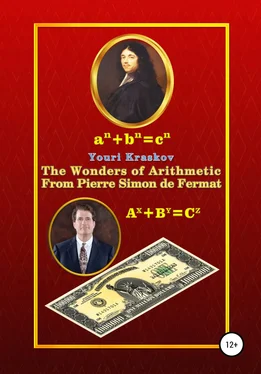



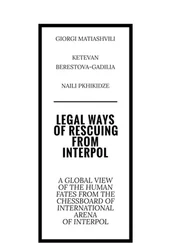
![Theresa Cheung - The Dream Dictionary from A to Z [Revised edition] - The Ultimate A–Z to Interpret the Secrets of Your Dreams](/books/692092/theresa-cheung-the-dream-dictionary-from-a-to-z-r-thumb.webp)


